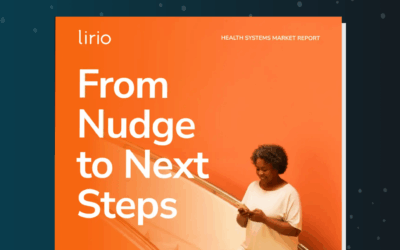The Health Equity Index (HEI), introduced to incentivize plans to reduce disparities in Medicare Advantage, is being retired. In its place, CMS is proposing the Excellent Health Outcomes for All (EHO4all) reward. The HEI was a clear signal that addressing health disparities mattered, so its loss may cause alarm. The proposed replacement, the EHO4all reward, offers new opportunities while also raising important questions. But without careful attention to how these changes are implemented, there’s a real risk that progress on equity could stall or even regress. That’s why it’s essential to move thoughtfully and proactively.
Who are the hard-to-reach?
EHO4all introduces a heightened focus on outcomes while keeping the spotlight firmly on equity, zeroing in on populations who’ve historically faced worse outcomes, like those who are dually eligible for Medicare and Medicaid, receive low-income subsidies, or live with disabilities. These are the groups most often labeled “hard to reach,” not because they’re disengaged necessarily, but because the system hasn’t reached them effectively. CMS may even expand who are considered challenging in the hard-to-reach group. For example, they are considering geography as an additional factor, which is promising. Where someone lives—urban or rural—can shape access, trust, and motivation in powerful ways.
We’ve seen firsthand some of the impact of where people live on their health behaviors. For example, rural versus urban addresses are consistently associated with vaccination behaviors in Lirio data, with urban dwellers more likely to vaccinate. In our recent analysis of replies to nudges for RSV vaccination, we found:
- Those living in urban settings were more likely to send texts back to us
- Urban dwellers’ texts were more likely to have questions or engagement with help
- In contrast, rural dwellers’ replies more often expressed anti-vaccine sentiment
By knowing where someone lives, payers can anticipate likely barriers and shape outreach that’s proactive, empathetic, and effective.
How can we design for equity?
These policy changes underscore a truth we’ve long embraced at Lirio: achieving equity requires more than good intentions—it demands behavioral precision. Equitable care requires behaviorally intelligent design. That means applying tools like motivational framing, barrier analysis, and carefully selected behavior change techniques to engage people not just broadly, but personally. Equity isn’t just a checkbox at Lirio—it’s baked into how we build digital interventions. We start by understanding the lived realities of the people we’re trying to reach. What stands in their way? What motivates them? What kind of message builds trust and moves them to act?
Our behavioral design process was built with equity in mind. We don’t push the same message to everyone and hope for the best. Optimal behavioral design creates tailored experiences that acknowledge patient and member barriers like digital literacy, past medical mistrust, or just a hectic life that makes health an afterthought. And we use behavioral science to craft messages that resonate with them, not just with “average” patients.
That’s critical, especially with bonus payments now contingent on overall strong plan performance. If payers want to succeed under the new rules, they’ll need more than broad improvements. They’ll need meaningful change where it matters most. Behavioral precision becomes essential.
Mission possible
So, while the name is changing, the mission stays the same. And in many ways, EHO4all may offer more tools for addressing inequity, not fewer. It’s a call to innovate, not just in what we deliver, but in how we understand the people we serve. However, success isn’t guaranteed. The healthcare ecosystem must work together to ensure the equity mission, and its related outcomes, are realized. For payers preparing for the EHO4all era, the path forward is clear: invest in behavioral strategies that meet people where they are—because equity isn’t just a metric, it’s a mandate.
View more of our recent blogs
New Health System Survey Uncovers Misalignment Between Operational Priorities and AI Investment Strategies
Lirio, the first-ever behavioral science and agentic AI platform that empowers people to live their healthiest lives, today released a report based on in-depth surveys with more than 75 executives from U.S. health systems, independent hospitals, and physician groups, showing more than half of healthcare organizations struggle to customize patient outreach content.
New market research shows health systems’ growing interest in behavioral change technology to enhance patient engagement
A new market report highlights that health systems’ biggest challenges include personalizing engagement content (such as text messages and emails) at the patient level, ensuring patients actively engage with outreach efforts, and automating communications to reduce staff burden.
Why Visuals Drive Behavior: Rethinking Health Communication in a Skim-Scrolling World
Words alone aren’t enough to change health behaviors. In today’s visual-first world, Lirio blends behavioral science and design to create images that inform, inspire, and drive healthier choices.



